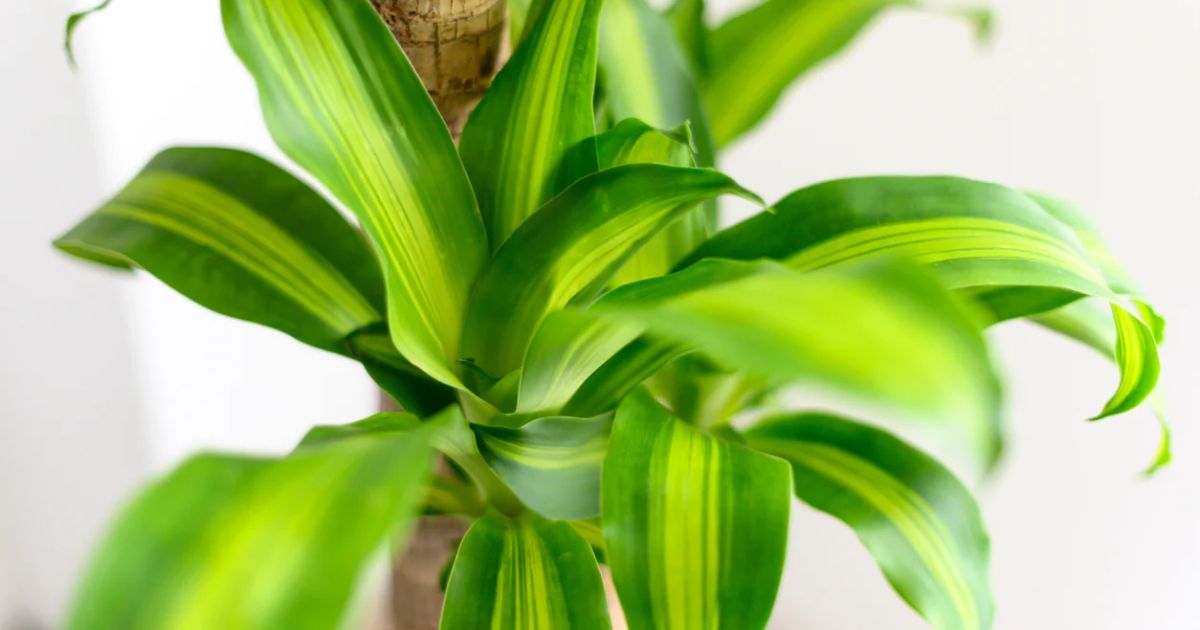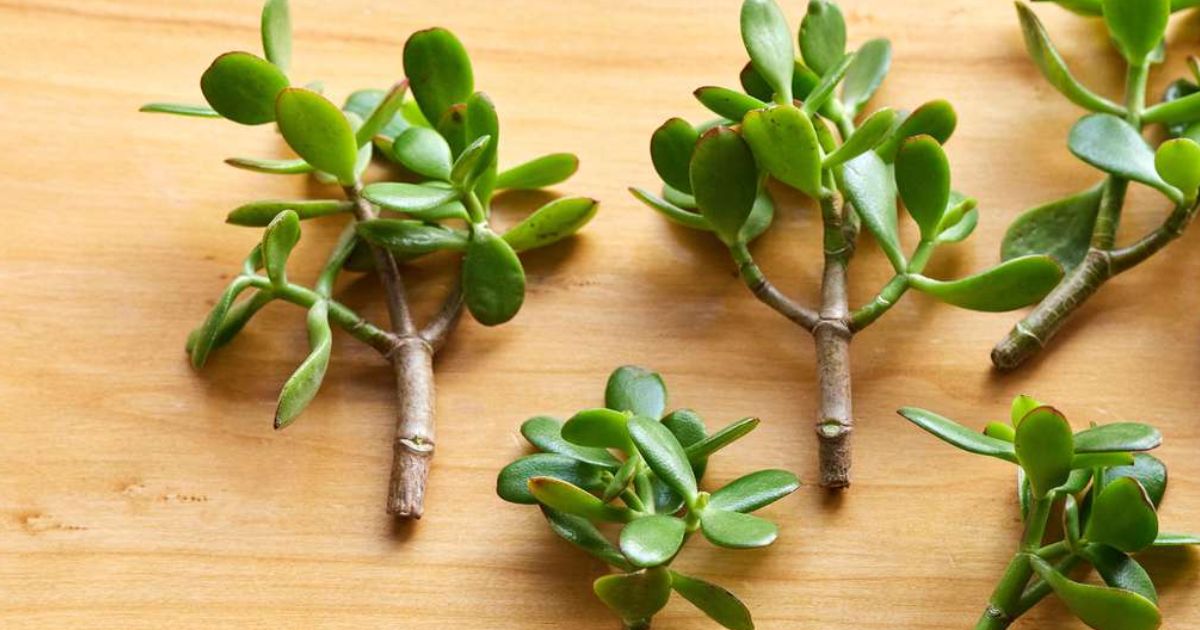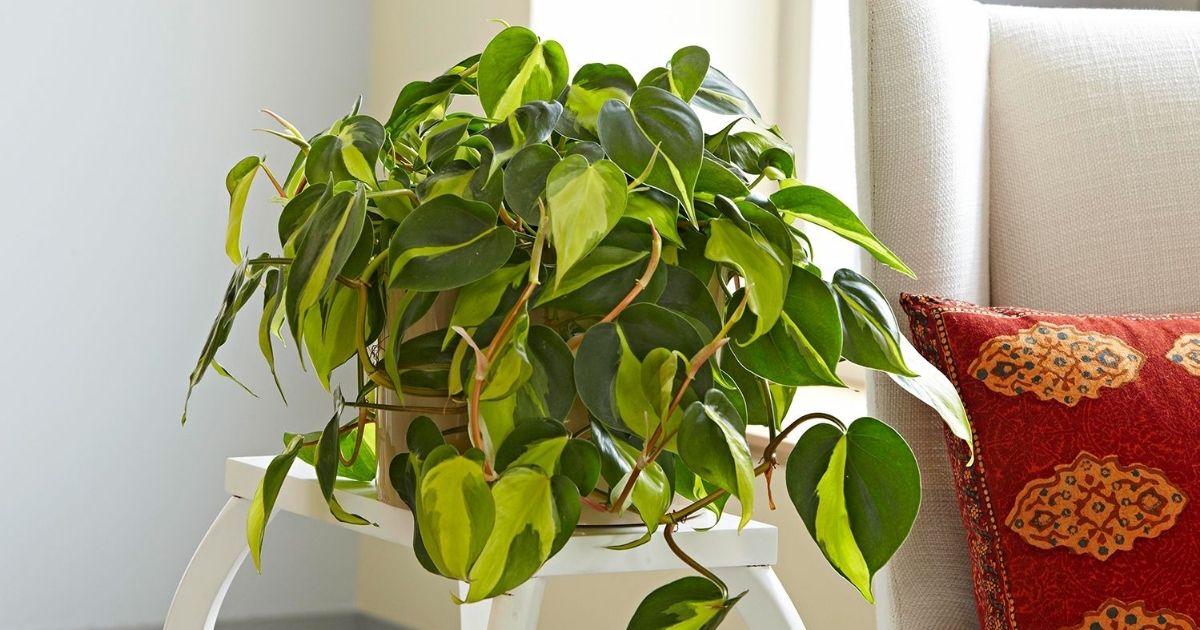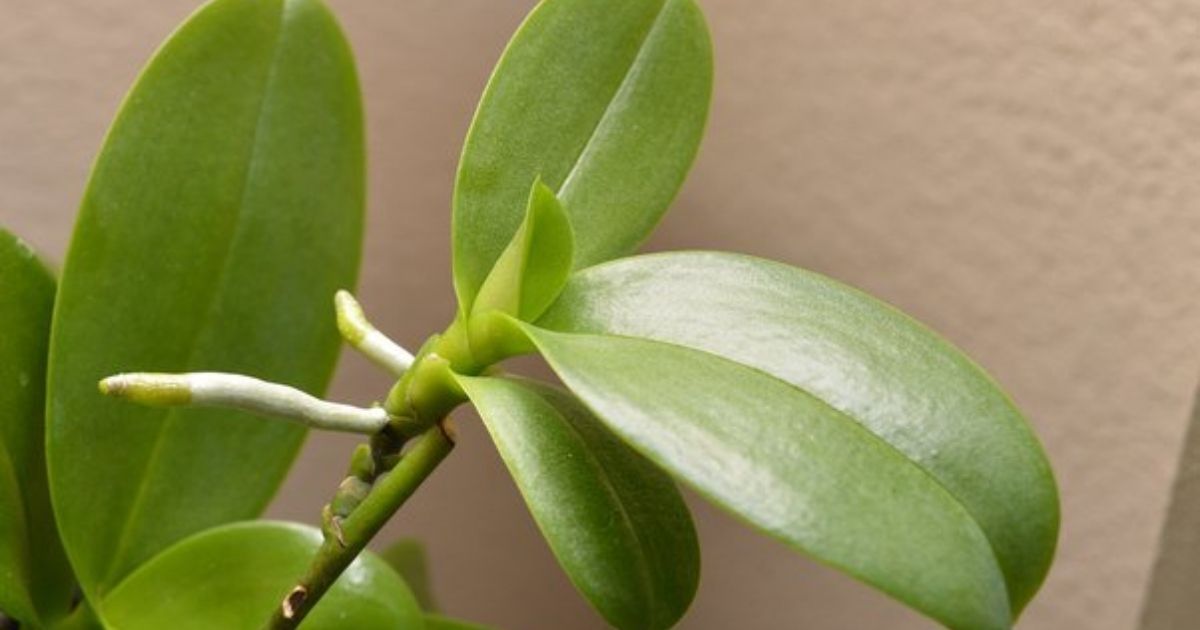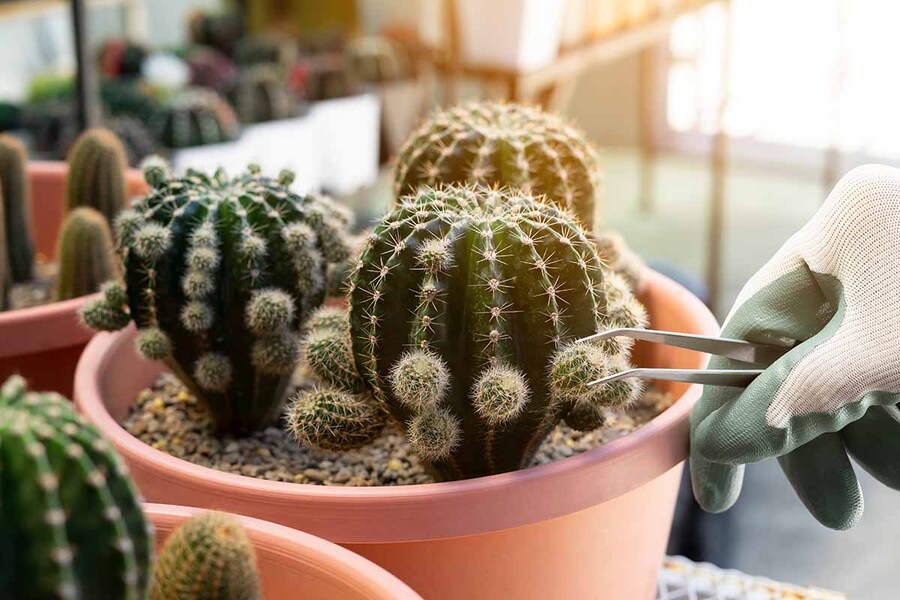How To Raise Humidity In A Grow Tent With 5 In-depth Methods
If you want to have your dream garden in grow tents, it's crucial to maintain an optimal environment inside. To achieve that, you should consider dozens of aspects, including humidity. Plants need enough moisture to keep growing well. Therefore, this article will reveal how to raise humidity in a grow tent using 5 different methods.
Table of Contents
When Should You Raise Humidity Level For Growing?
Before starting, let's clear the basics:
Relative humidity (shortened as RH) is a unit of measurement of the amount of water in the air in a saturated state, calculated as a percentage.
When air is saturated with water, the value at a given temperature is determined to be 100%. The two components that makeup RH are temperature and the amount of water vapour in the air.
Humidity Level In Grow Tent
Different plants require different humidity levels to thrive and have a longer lifespan. Generally, you should maintain the RH levels inside your grow tent within 45% to 75%. If they drop below 40%, ensure to take immediate action to increase humidity. Otherwise, your garden may face a high risk of damage. Take a closer look at the growth stage and its required RH:
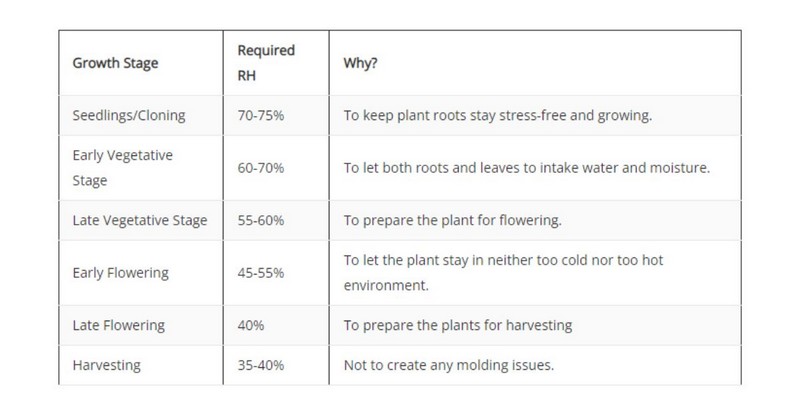
Ideal RH for each growth stage (Source: What for me?)
Certain plants and growth stages require high humidity levels. To address this, you should know how to increase humidity in grow tents.
What Happens If The Humidity Is Too Low In My Grow Tent?
Low humidity affects plant growth in many ways:
- Low humidity stagnates microbial activity: Plants wilt when living in environments with low humidity, and microbial activity will stagnate. An 80 - 95% RH is the most suitable threshold for growing fungi and actinomycetes.
- RH affects plant growth and reproduction: Low relative humidity increases soil dryness, destroys water balance, and hinders plant growth. Relative humidity and saturation gradients can also limit some plants' dehiscence, pollen, and germination times, affecting plant pollination and fertilisation.
- Low RH leads to crop pests and diseases: Cotton aphids and spider mites prefer to live in environments with relatively low humidity. Too much moisture can also easily lead to many diseases, such as wheat rust.
- Humidity can affect carbon filtration efficiency: As vapour-containing chemicals pass through the filter, water vapour in the air also passes through, binding to the carbon and reducing space for other chemicals to bind. As a result, it may reduce filtration efficiency.
- Humidity affects nodule bacteria in bean plants: If there is a lack of moisture, the nodules on the roots of legumes become almost inactive. Gardeners must provide enough water for the plants for this process to occur normally. At that time, plant protein nutrition is also enhanced.
How To Raise Humidity In Grow Tent In 5 Ways
Controlling RH is difficult, so we have compiled a few methods to help you increase humidity in the simplest yet most effective way.
Method 1: Use A Humidifier
A humidifier is a swift and straightforward way to boost indoor humidity levels in your grow room, tent, or hydroponic garden. Especially in winter, when humidity drops sharply, a humidifier will disperse moisture, raising humidity and creating ideal plant growth conditions.
A compact room humidifier is usually sufficient for smaller tents or basement grow rooms. However, commercial growers and larger spaces may need a ducted humidifier capable of covering the entire facility.
If you're growing tropical plants that thrive in warmer air, consider using a humidifier with a warm mist function.
Here are few notices when using this method::
- Water Selection: Choose filtered or distilled water instead of tap water to provide your plants with the highest-quality moisture.
- Built-In Humidistat: Many modern humidifiers have a built-in humidistat, offering real-time updates on indoor humidity levels.
- Combination With Fan: Increase moisture circulation by placing an oscillating fan near the humidifier, ensuring even distribution throughout your growing space.
- Ultrasonic Humidifier: This device reintroduces moisture without changing the room temperature. It has a directional mist outlet and a large tank and can run for up to 8 hours.
If you want to know which product to choose, we recommend an Ultrasonic Humidifier | 2.6L. This product provides numerous benefits:
- This ultrasonic air humidifier increases moisture levels in grow tents without changing room temperature.
- It has a directional mist outlet and a large tank capacity, providing up to 8 hours of operation.
- With ultra-silent operation, automatic switch-off function, and energy efficiency, they are the perfect addition to any grow room.
- The fine mist produced improves nutrient uptake, transport and overall growth without wetting the plant.
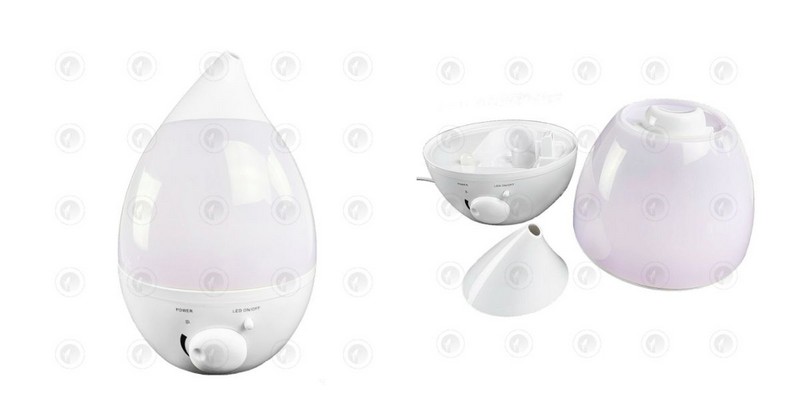
Ultrasonic Humidifier | 2.6L
Method 2: Add More Evaporated Water
But how can I raise the humidity in my tent without a humidifier? In this case, consider adding more evaporated water. Here's how:
Hang Wet Towels
Many don't know that hanging wet towels can temporarily increase humidity. Soak the towels in water, then hang them around the grow tent. Place them near the vents along the sides of your tent.
As air enters the tent, it touches the towels. Moisture will then evaporate from the towel, increasing the room's humidity.
- Keep the towels away from growing lights and other heat sources (e.g. LED grow lights) so they don't burn.
- Towels aren't a permanent solution, but they can add moisture quickly.
- Gardeners can use towels in any tent type as long as they have a place to hang them. The best choice is in high tents with fans that blow air near the ceiling.
Use Water Bowls
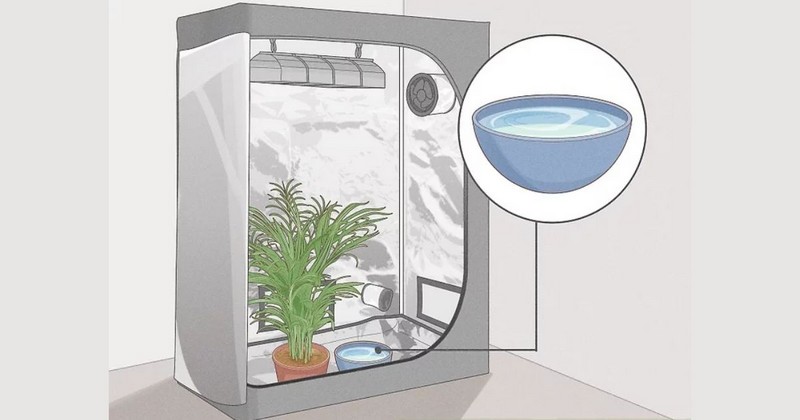
To gradually increase humidity, fill bowls or trays with water and place them around the tent. Pay attention to spots like large exhaust fans near the ground and vents. As water evaporates, humidity increases.
- You can refill or remove the water bowls when needed.
- Better than wet towels at consistently increasing tent humidity.
- Use the bowl in large tents with plenty of floor space and vents.
Place Wet Sponges
A quick way to replenish evaporated water is to soak sponges in water and place them near fans or vents inside the tent. Airflow and heat will evaporate water, increasing humidity. Wet sponges are for small tents with shelves because gardeners can place them easily around plants.
- Alternatively, you can place the sponge in a bowl or tray filled with water to speed up evaporation.
- Once the sponges are dry, reuse them to maintain moisture or discard them so the levels drop again.
- The sponge dries faster than a water bowl, helping moisture spread quickly. You can also place them closer to plants and bulbs for effective moisture distribution.
Method 3: Group Plants Together
Creating a "humidity island" by grouping moisture-loving plants is a great way to raise RH in a grow tent. When some transpire, they naturally increase humidity, creating a microclimate that benefits all plants in the group.
Not only does grouping plants increase overall moisture, but it also allows you to target specific areas for controlling RH. This characteristic is especially beneficial in cases where you need to provide extra humidity for particular plants, saving you from unnecessarily and wastefully humidifying the entire growing space.
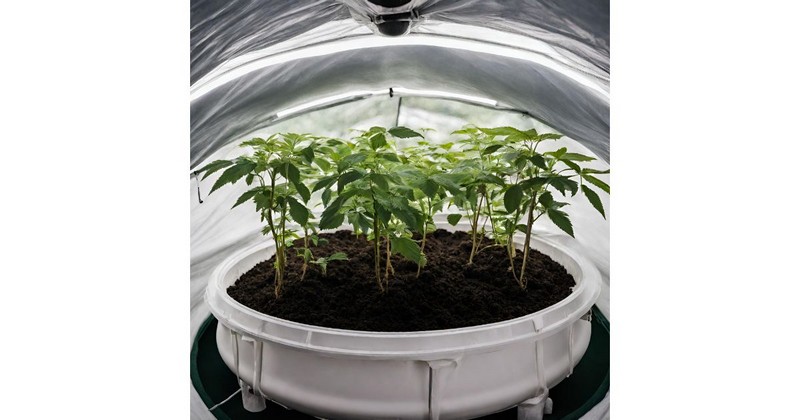
But that's not all.
Increasing plant density is a practical solution for those having difficulty maintaining humidity in their grow tent. Plants naturally release water vapour as part of the respiration process. By planting more plants, your grow tent will naturally have increased water vapour, leading to increased humidity.
If you are on a tight budget, consider adding large trees.
Larger trees have larger leaves that release significant amounts of water vapour and CO2. However, be cautious because too many large plants in a growing space will limit the ability to provide nutrients and airflow to young plants and affect their growth.
Method 4: Change the Floor Soil
How to raise humidity in grow tents solely by adjusting the floor soil? Follow these steps:
- Step 1: Choose soil that has better water retention capacity.
- Step 2: Make a walkway or floor with this soil.
- Step 3: Create a large water surface area.
This setup will increase RH within your grow tent.

The floor soil
When using this method, choosing a soil with a suitable water-holding capacity is critical. Even though clay retains water best, it can create a damp environment if used alone. We suggest choosing a mixture of clay and silt to get the right balance.
Besides, this layer of soil is not a growing medium for your plants. So, if your plants are already developing in the soil, you don't need to change the entire growing medium. Instead, create a fake floor using soil mix to help increase humidity.
Method 5: Lower the Fan Speed
Adjusting ventilation is also an effective way to increase RH and successfully grow plants in your grow tent. Without proper ventilation, there will not be enough air exchange, hindering plant health.
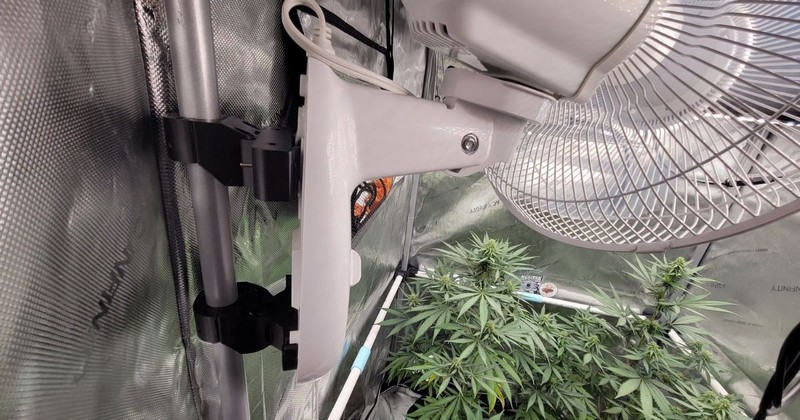
Typically, growers set fan speeds to moderate levels to maintain humidity during different stages of plant growth. However, if you set the fan to high speed, there are two problems:
- The air will dry quickly, resulting in very low humidity in the grow tent.
- Water vapour does not have enough time to condense on the leaves, leading to insufficient moisture and dehydration of the plant.
Then, what should gardeners do in this case?
The answer is to set the fan speeds to the lowest possible level. This action will circulate less air inside the grow tent and increase RH. However, remember that this method alone may not increase the humidity to 70%.
Here's how to adjust the fan speed to raise humidity:
- Lower the speed of ventilation fans near the ceiling of the tent because it sucks stale air and moisture out.
- Adjust other fans that circulate air between plants to a low level.
- Temporarily turn off the ventilation system for about an hour daily to quickly increase humidity.
- Avoid turning off the fan permanently to ensure a stable temperature throughout the tent.
- This method suits large tents equipped with adjustable-speed ventilation fans or wall-mounted fans.
See more: Types of hydroponic systems
Frequently Asked Questions
What is the best way to humidify a grow tent?
There are various ways to humidify a grow tent, as mentioned above:
- Use a humidifier.
- Add more evaporated water.
- Group plants together.
- Change the floor soil.
- Lower the fan speed.
- And more.
Do grow lights increase humidity?
Yes. Like the sun, grow lights can produce a significant amount of heat. This heat leads to the evaporation of water from your plants and even extreme humidity. This excess moistness can strongly affect your garden' health and productivity.
Final Thoughts
The humidity in your grow tent is affected by many factors, such as temperature, the type of plant you are growing, and its growth stage. So, follow the 5 methods we've shared on how to raise humidity in grow tents and provide your plants with an optimal environment.
Finally, follow us and check out our latest article about ways to lower humidity in a grow tent.
